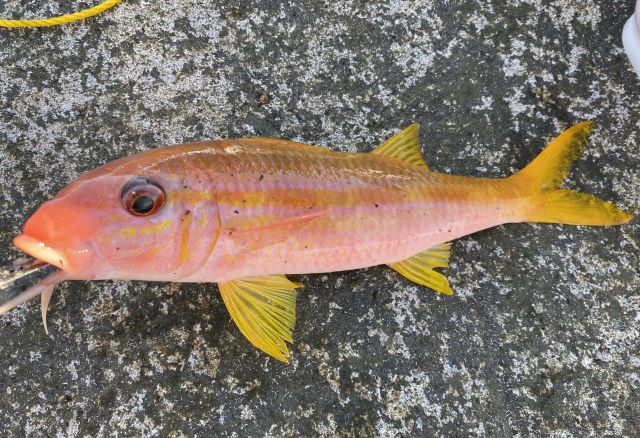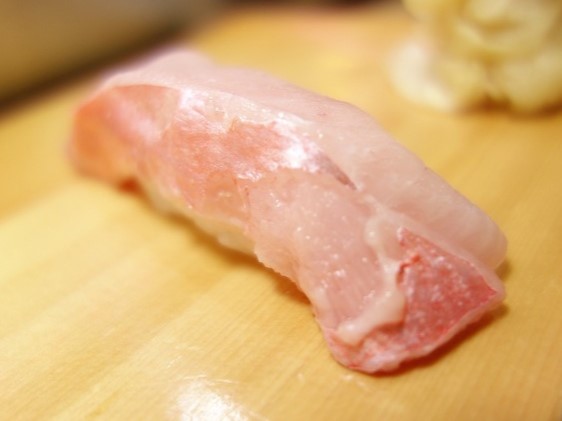
The appearance of Manybar goatfish (Ojisan)
Common name: Manybar goatfish, Banded goatfish, Doublebar goatfish, Five-barred goatfis, Multibar goatfish, Multibarred goatfish, Common goatfish
Japanese name: Ojisan (叔父さん、伯父さん)
Taiwan common name: 多帶海緋鯉、老爺、秋姑、鬚哥、黑點秋哥、黑尾秋哥
Chinese common name: 多带副绯鲤
Korean common name: 오점촉수
French common name: Capucin à trois selles, Poisson-chèvre à bandes, Rouget à trois bandes
Scientific name: Parupeneus multifasciatus (Quoy & Gaimard, 1825)
Nigiri sushi detail: Manybar goatfish (Ojisan) Nigiri sushi

The appearance of Manybar goatfish (Ojisan) nigiri
Characteristics:
Manybar goatfish (Ojisan) is distributed in southern Japan and the Indo-West Pacific region. It inhabits coastal reefs and coral reefs. The body length is about 30 cm. Its body color is reddish-red with 2~3 broad dark brown transverse bands on the upper part of the body. A pair of whiskers on the lower jaw is an organ that detects taste and other senses, which they use to search for and prey on benthic animals in sand and mud.
Ojisan was one of the so-called unused fish. With the decline of its stocks, it has become scarce and is now a high-end fish with wholesale prices sometimes exceeding US$10 per kilogram. Although related and similar species are sometimes sold at low prices under the same name, they are strictly different species. These days, you can sometimes find Ojisan at conveyor-belt sushi restaurants.
Although a little watery, it has no peculiar taste, and its clear white flesh has a sweet and delicious flavor. When fresh, it is best served as sashimi. It is also delicious seared, yushimo-zukuri with the skin on, or kobujime with the skin removed. It is also suitable for simmered or deep-fried.
Share this article